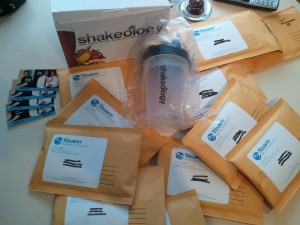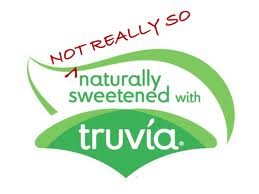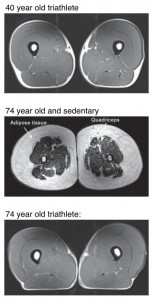Seems like every week a new report comes out showing the benefits and evils of consuming coffee. Personally I believe drinking small size cups of coffee with no added junk is perfectly fine and actually has some advantages for athletes. It’s the oversized, liter size Starbuck mugs serving up deserts that have a some resemblance to coffee flavor that is the problem.
I just came across two excellent articles by Steve Edwards that pretty much lays out the same thought and I thought I would share. Here is a link to his 10 things to love and hate about coffee. Below is his second article. – Enjoy!
Article: The Latté Lowdown: 10 Things to Like and Not Like About Coffee
By Steve Edwards
Depending on how you interpret statistics, coffee is the most consumed beverage in the world. Together with its brethren, tea, only soda measures up in a popularity contest. Because they all contain caffeine, they’re often lumped together in one group, which is a pity because they couldn’t be further apart. Both coffee and tea are natural tonics steeped in lore and tradition. Soda, on the other hand, has nothing natural about it. It’s a purely man-made concoction designed to elicit a drug-like response and cravings.
Coffee and tea may often be referred to as “drugs,” but that is a misnomer. They are natural herbal elixirs, more akin to echinacea than ibuprofen. A quick search of the National Institute of Health’s database shows 8,617 studies on coffee alone and 25,164 on caffeine as of the time of writing this article. The overwhelming majority of these studies are positive. Humans have been drinking coffee for longer than recorded history, and research confirms that it has very few downsides. Soda, on the other hand, has only been around a few generations, and the first long-term studies on it have just started to appear. The appalling results link both regular and diet sodas to myriad diseases and decreased life span. So, to repeat: In no way should these beverages ever be related.
Just because coffee has tradition and science on its side doesn’t mean you should have a 64-ounce trucker’s mug permanently attached to your wrist. As with all “healthy” foods, supplements, tonics, or herbs; common sense—if not downright restraint—should be employed with use. Let’s take a look at 10 things to like and not like about coffee.
- Coffee can keep you awake. This can be the desired effect, but if it hampers your ability to sleep when you want to, give it a miss. While coffee has all kinds of cool benefits, none of those are as beneficial as sleep. During the various stages of sleep, our body releases many powerful regenerative hormones, making it the greatest natural performance aid around. Furthermore, a 17-year-old study out of England, featuring 10,000 participants, showed those who cut their sleep from seven hours a night to five or less faced a 1.7-fold increased risk in mortality from all causes and more than double the risk of cardiovascular death. Sleep first. Then, consider a cup of java.
- “Insert your favorite flavor”-accino doesn’t make it coffee. For millennia, coffee was consumed in small cups and, perhaps, enhanced by a touch of sugar or milk.
 Only since the Starbucks® revolution, has it been possible to order what was formerly a cup o’ Joe and have it delivered as something that was formerly a milkshake. The majority of most coffee house menus are filled with items that aren’t really coffee, but rather coffee-spiked dessert. Coffee and tea have zero calories. A spoonful of sugar and dash of milk contain around 40 calories. The average drink at Starbucks contains 300 empty calories or more, turning most people’s conception of coffee into something closer to soda. So before ordering your next Choco-Vanilla-accino-Frappé, consider that even one soda a day greatly increases the risk of type 2 diabetes and metabolic syndrome.
Only since the Starbucks® revolution, has it been possible to order what was formerly a cup o’ Joe and have it delivered as something that was formerly a milkshake. The majority of most coffee house menus are filled with items that aren’t really coffee, but rather coffee-spiked dessert. Coffee and tea have zero calories. A spoonful of sugar and dash of milk contain around 40 calories. The average drink at Starbucks contains 300 empty calories or more, turning most people’s conception of coffee into something closer to soda. So before ordering your next Choco-Vanilla-accino-Frappé, consider that even one soda a day greatly increases the risk of type 2 diabetes and metabolic syndrome. - It’s a magic elixir. And now for some good news. A 20-year-old study that followed some 84,000 women and 44,000 men concluded that coffee had a bevy of benefits. Published in the May 2, 2006, issue of Circulation, the study concluded that drinking coffee isn’t harmful to cardiovascular health, as had been long assumed, and may even be beneficial. From Harvard Health, “The latest research has not only confirmed that moderate coffee consumption doesn’t cause harm, it’s also uncovered possible benefits. Studies show that the risk for type 2 diabetes is lower among regular coffee drinkers than among those who don’t drink it. Also, coffee may reduce the risk of developing gallstones, discourage the development of colon cancer, improve cognitive function, reduce the risk of liver damage in people at high risk for liver disease, and reduce the risk of Parkinson’s disease. Coffee has also been shown to improve endurance performance in long-duration physical activities.” Need I say more? I’m just getting started . . .
- Coffee can reduce the pain of exercise. An article published in the April 2009 edition of the International Journal of Sport Nutrition and Exercise Metabolism shows that coffee can kill some of the pain associated with rigorous exercise. “Caffeine works on a system in the brain and spinal cord (the adenosine neuromodulatory system) that is heavily involved in pain processing,” said Robert Motl, kinesiology and community health professor at University of Illinois. These results seemed constant whether or not the subjects were habitual caffeine drinkers. So much for the knock on caffeinated pre-workout supplements!
- You’re less likely to get type 2 diabetes. It’s not all about caffeine. A slew of studies report that coffee lowers the risk of type 2 diabetes. The July 6, 2005, issue of the Journal of the American Medical Association looked at data from many of them and concluded that their findings were, indeed, true. One of those, from the February 2006 issue of Diabetes Care, found that decaf lowers the risk of diabetes as well, suggesting that something other than caffeine is likely responsible.
- It can increase your sports performance. This probably isn’t too surprising since, for many years, caffeine was on the World Anti-Doping Agency’s banned substance list. Coffee increases many processes in the body that can lead to better performance. Among its ergogenic (performance enhancing) benefits are better mental focus, increased ability to use fat as fuel (which spares your glycogen stores), and increased ability to release calcium stored in the muscle, leading to greater power output, not to mention the one I referenced in number four. And you don’t need a trucker’s mug to do it. Studies at the Australian Institute of Sport report that athletes get the full caffeine effect with as little as 1 milligram of caffeine per kilogram of body weight, or about 1 cup of coffee for an average human.
- Coffee makes you smart. A study published in the European Journal of Clinical Nutrition in August 2006 followed 676 healthy, older men from Finland, the Netherlands, and Italy for 10 years and measured their cognitive function. Those who drank coffee had lower rates of age-related cognitive decline than those who didn’t, with maximum protection seen in men who drank 3 cups of coffee a day.
- You’re less likely to get prostate cancer. Men are advised to have regular prostate cancer testing done once they hit the not-so-ripe-old-age of 40. Turns out, coffee is one of your greatest allies in the fight against it, especially when you drink a lot of it. A 2006 study conducted on 50,000 men over a 20-year period concluded that those who drank coffee were 60 percent less likely to develop aggressive prostate cancer. And here’s where tea drinkers might listen up too. “Caffeine in coffee doesn’t seem to be the link, since the same reduction was seen for consumption of decaffeinated coffee,” stated Kathryn Wilson, a research fellow in epidemiology at the Harvard School of Public Health. “It has something to do with insulin and glucose metabolism. A number of studies have found that coffee is (also) associated with a reduced risk of diabetes.” It’s also worth noting that 6 cups a day seemed like the magic number, as that’s where the risks were lowest. A follow-up in 2011 has further confirmed this study.
- Six is the magic number for cancer. In 2007, almost 94,000 women participated in a study that found that those who drank caffeinated coffee daily had a 10 percent lower risk of nonmelanoma skin cancer, while those who drank 6 or more cups daily had an almost 40 percent reduction in risk. This time, caffeine seems like the key, as researchers were able to uncover the mechanism by which caffeine helps lower the risk. Caffeine molecules were already known to behave as a natural sunscreen, but they also found the stimulant to have a positive effect on DNA.
- Coffee reduces your chance of having a stroke. I raise your six and give you eight. A 2008 study of more than 26,000 male smokers in Finland found that the men who drank 8 or more cups of coffee a day had a 23 percent lower risk of having a stroke than the men who drank little or no coffee. Other reports suggest the effect applies to healthy nonsmokers, too. This was backed by researchers at UCLA and USC who examined data on coffee consumption and stroke prevalence among more than 9,000 participants in the National Health and Nutrition Examination Survey. At a 2009 conference, they reported that the likelihood of having a stroke was highest among people who didn’t drink coffee and lowest among those who drank the most coffee: 5 percent of people who drank 1 or 2 cups a day suffered strokes, whereas 2.9 percent of people who drank 6 or more cups suffered strokes. So much for moderation.
Turns out there’s a good reason coffee is not just popular to drink but has an almost cult-like following; it makes life better. And it seems that we knew it long before we could prove it. Just like the British and their beloved tea, coffee is a part of our culture and our history. From literature, to art, to music, and cinema, life wouldn’t be the same without a steaming hot cup of Good Morning America®.
In closing, I’d like to leave you with a few pearls of wisdom from one of coffee’s most outspoken fans—artist, musician, and film director David Lynch. “I’m gonna let you in on a little secret. Every day, once a day, give yourself a present. Don’t plan it, don’t wait for it, just . . . let it happen. Could be a new shirt at the men’s store, a catnap in your office chair, or two cups of good, hot, black coffee.” —Special Agent Dale Cooper, Twin Peaks.
Resources:
- Abel, Ernest L et al. “Daily coffee consumption and prevalence of nonmelanoma skin cancer in Caucasian women.” European journal of cancer prevention the official journal of the European Cancer Prevention Organisation ECP 16.5 (2007) : 446-452.
- Conis, E. April 10, 2011. Coffee Studies Should Warm Your Heart. Los Angeles Times.
- Ferrie, Jane E et al. “A Prospective Study of Change in Sleep Duration: Associations with Mortality in the Whitehall II Cohort.” Sleep (Rochester) 30.12 (2007) : 1659-1666.
- Hu, F B et al. “Coffee consumption and coronary heart disease in men and women: a prospective cohort study.” Circulation 113.7169 (2006) : 1341-1345.
- Gliottoni, Rachael C et al. “Effect of caffeine on quadriceps muscle pain during acute cycling exercise in low versus high caffeine consumers.” International Journal of Sport Nutrition and Exercise Metabolism 19.2 (2009) : 150-161.
- Tarnopolsky, Mark A. “Effect of caffeine on the neuromuscular system—potential as an ergogenic aid.” Applied physiology nutrition and metabolism Physiologie appliquee nutrition et metabolisme 33.6 (2008) : 1284-1289.
- Van Dam, Rob M, and Frank B Hu. “Coffee consumption and risk of type 2 diabetes: a systematic review.” Jama The Journal Of The American Medical Association 294.1 (2005) : 97-104.
- Vasanti S. Malik, SCD, Barry M. Popkin, PHD et al. “Sugar-Sweetened Beverages and Risk of Metabolic Syndrome and Type 2 Diabetes.” Diabetes Care November 2010; 33(11): 2477-2483.
- Wilson, K M et al. “Coffee Consumption and Prostate Cancer Risk and Progression in the Health Professionals Follow-up Study.” JNCI Journal of the National Cancer Institute (2011) : djr151-.

















